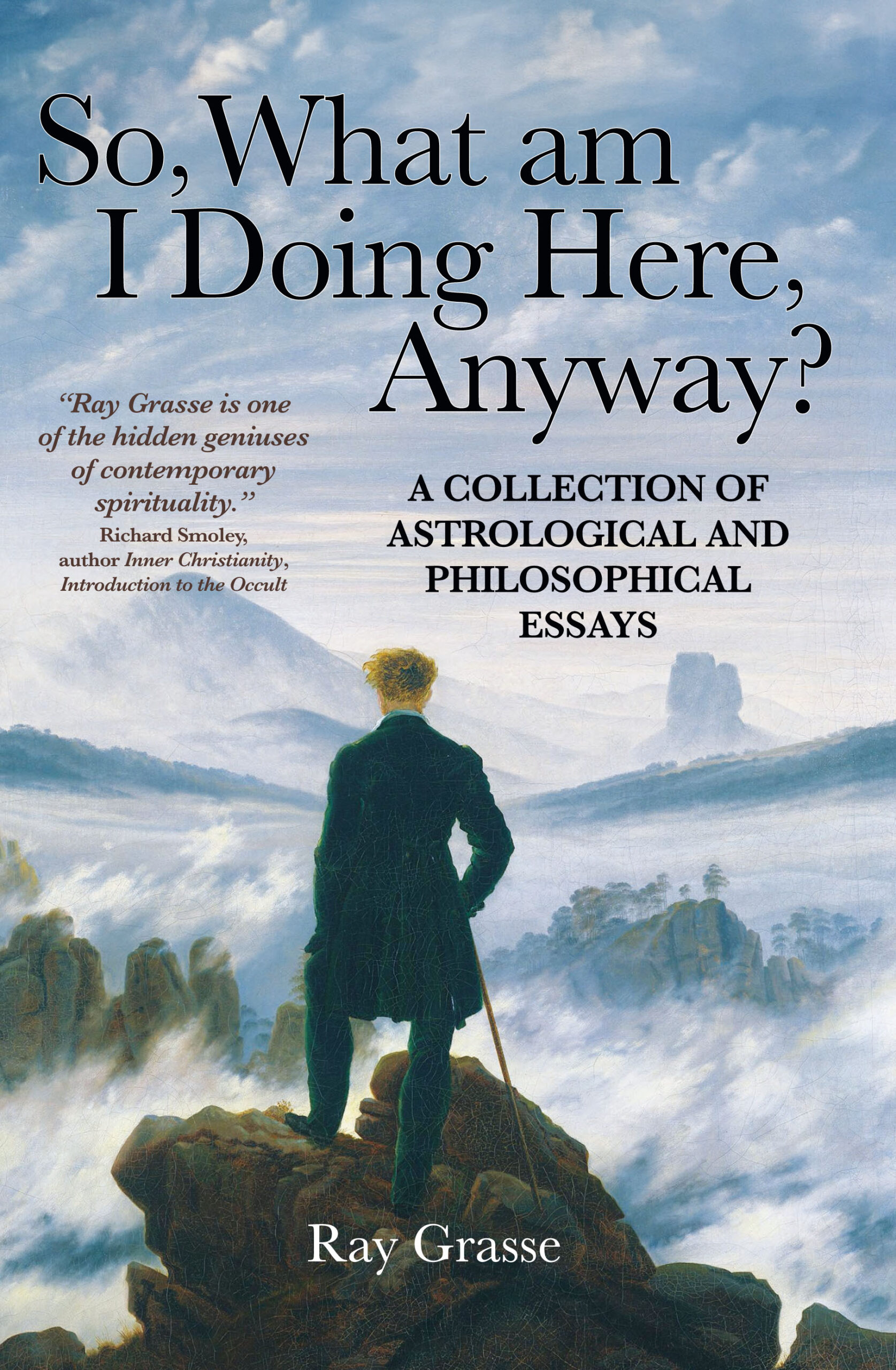
Book review by John P. O’Grady
An astrological consultation is commonly referred to as a “reading.” Yet what do we mean by this term? It is an activity so familiar that we take it for granted, and thus we overlook the fact that reading is actually a form of enchantment. In his latest book, Ray Grasse aims to refamiliarize us with the mystery of reading — or more specifically, with the mystery of astrological reading. He opens with a reminder that we dwell in a world of meaningfulness, and that to read the “signs” that surround us is to engage the imagination. “It’s our imagination that allows us to conceive new futures, step into other dimensions, and open up to possibilities never before considered.” We begin then to recognize that human beings are more closely related to the invisible than to the visible. Reading serves as a conduit between these realms.
Consisting of a series of 39 interlinked essays, the book is structured along lines similar to Grasse’s previous collections, StarGates: Essays on Astrology, Symbolism and the Synchronistic Universe and When the Stars Align: Reflections on Astrology, Life, Death, and Other Mysteries. This latest offering “explores a diverse range of subjects that sometimes requires ways of imagining you may not have entertained before.” The promise of being led into a region as tenebrous and bewildering as the imagination might give some readers pause, but with Grasse as our guide we are in capable hands. He has over four decades of experience as an astrologer, and he writes in a style that is as clear as it is graceful. He knows what he’s doing and is most generous in sharing the knowledge gained from his wide-ranging spiritual explorations. Some of the chapters focus on nuts-and-bolts astrological technique, such as the “Late Bloomer” effect of Saturn in a chart; others broach topics ranging from Jazz to Bigfoot, while others are largely autobiographical.
Varied as these essays are in terms of subject matter, they share a philosophical perspective that Grasse refers to as the “Symbolist worldview,” also known as the “Theory of Signatures” or “the Doctrine of Correspondence.” It is a venerable tradition, extending back in Western Philosophy at least to Plato, and includes such notable figures as Marsilio Ficino, Emanuel Swedenborg, Jakob Böhme, and Ralph Waldo Emerson, to name but a few. In brief, the Symbolist worldview is based on the notion that direct correspondences exist between the spiritual and the material realms, establishing a divine harmony. As a result of this correlation, the physical world can be “read” as if it were a book that reveals the secrets of the spiritual world. Such a book, however, is not to be read literally but figuratively. Analogy is the primary mode of expression here. As Grasse puts it in the marvelous essay titled “Toward a Grand Unified Theory of Synchronicity”: “when perceived through the eye of metaphor, one’s vision opens up to a far broader universe of meanings and acausal connections.” His point here has broad implications for the practicing astrologer. Foremost among them: beware of taking things too literally.
So, What Am I Doing Here, Anyway? also serves to remind us that reading is a form of seeking counsel, whether it be in the pages of a book or in the twinkling configurations of heavenly bodies. One of the great pleasures of reading Ray Grasse is the attention he pays to what actually happens during an astrological consultation. Nowhere is this more apparent than in the book’s longest essay, “Some Simple Tips from a Long-Time Astrologer.”
Consider, for example, this advice about astrological consultation: “the first thing you say to a client about their horoscope should be positive, because your initial comments will tend to make a profound and lasting impression.” These words ought to serve as the astrologer’s equivalent of the Hippocratic Oath — First, do no harm — and should be taken to heart by any who would present themselves as astrological “counselors.” For its insight and practical wisdom, “Some Simple Tips” is essential reading for all students of astrology, no matter how seasoned they might be. In fact, the more experience one has as an astrologer, the more valuable these “tips” will prove, as they are drawn from what might be called “Beginner’s Mind Wisdom.” The allusion here is to Shunryu Suzuki Roshi’s famous saying: “In the beginner’s mind there are many possibilities, but in the expert’s are few.” Near the conclusion of “Some Simple Tips,” Grasse sums up his approach to the practice of astrology by phrasing it as a humble and straightforward question: “How can I help my clients best take advantage of their horoscopic patterns, whether those be natal or predictive, while helping them avoid or redirect their more difficult potentials?”
Ray Grasse has furnished us with an engaging and important contribution on the theory and practice of astrology. He demonstrates once again how the horoscope “provides us with a useful tool for both understanding and navigating our way through this rich landscape of meaningfulness, while simultaneously shining a light on the profound interconnectedness between our inner and outer worlds.”
So, What Am I Doing Here, Anyway? is a treasure house of advice on the art of reading in an astrological way. Published by The Wessex Astrologer it will be released and widely available on April 25, 2024.
Bio: John P. O’Grady has been a student and practitioner of astrology for over 40 years. He has published several essays on astrology, one of which appeared in The Mountain Astrologer “some years back.”
Please find his Photos and Words here.
email: johnpatrickgrady@gmail.com


One Response
Can’t wait to read this book!